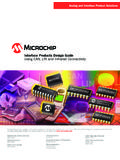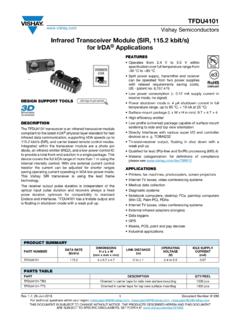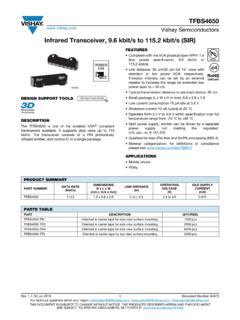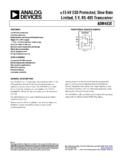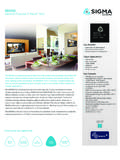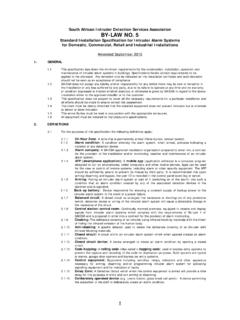Transcription of LonWorks Fundamentals - EBAC
1 LonWorks Fundamentals A Guide to a Basic Understanding of the LonTalk Protocol North Beach Consulting, LLC 11217 Eastborough Ct. Richmond, VA 23233 Telephone: (804) 270-7092 Copyright Notice: This document may not, in whole or in part, be copied, photocopied, reproduced, translated, or reduced to any electronic medium or machine-readable form without prior written consent from: North Beach Consulting, LLC 11217 Eastborough Ct. Richmond, Virginia 23233 While every effort has been made to assure the accuracy of this document, North Beach Consulting, LLC shall not be held responsible for damages, including consequential damages, arising from the application of the information given herein. The information in this document is subject to change without notice.
2 Trademark Notices: Microsoft and Windows are registered trademarks, and Windows 95, Windows NT, Windows 2000, Windows XP, and Internet Explorer are trademarks of Microsoft Corporation. Echelon, LON, LonMark, LonTalk, and LonWorks are registered trademarks of Echelon Corporation. Tridium Niagara, the Niagara Framework, Vykon, WorkPlace Pro, Web Supervisor, JACE-4, JACE-5, and JACE-NP are trademarks of Tridium Inc. All other product names and services mentioned in this publication that are known to be trademarks, registered trademarks, or service marks have been appropriately capitalized and are the properties of their respective owners. LonWorks Fundamentals 2003, North Beach Consulting, LLC All rights reserved. LonWorks Fundamentals A Guide to a Basic Understanding of the LonTalk Protocol Overview This document introduces the LonWorks technology, the company that created it (Echelon), and the LonMark Association, which is devoted to developing standards for interoperability in control system networks.
3 This document can be read in advance of, or in combination with, technical training relating to support of building automation systems employing the LonTalk protocol. This document is intended for anyone desiring a basic understanding of LonWorks networks. The following topics are addressed: An overview of LonWorks technology. An overview of the LonMark Association. Basic design of LonWorks nodes including a discussion of the Neuron chip, communications transceivers, media, and network topology. Channels, repeaters, and routers. An overview of user interface requirements. Logical addressing including a discussion of domains, subnets, and node addressing. An overview of how LonWorks devices share data including standard network variables types (SNVT) and LonTalk bindings.
4 A discussion of configuration parameters including standard configuration parameter types (SCPT) and user-defined configuration parameter types (UCPT). Functional profiles and program IDs. LonWorks LonWorks is the name given to the collective technology developed by the Echelon Corporation for implementing control system networks. The root term, LON, is an acronym for local operating network, which refers to an intelligent control network that facilitates communications between devices or nodes that communicate with one another over a variety of transmission media using a common, message-based control protocol. LonWorks Fundamentals Page 1 Echelon's design endeavors to provide an off-the-shelf method for manufacturers to build devices that can coexist and operate as peers on a flat, interoperable control network.
5 LonMark If a device is designed to use the LonWorks technology, depending on the implementation, it may or may not interoperate with other LonWorks devices. Simply using the LonWorks technology does not guarantee interoperability. The LonMark certification is granted through the LonMark Association, which is a large, relatively independent organization of manufacturers, suppliers, and end users from around the world. The organization develops technical product specifications and guidelines that promote interoperability among participating equipment manufacturers. Participation of this nature promotes interconnection and intercommunication with other products.
6 LonMark refers to the mark signifying that a product has met LonMark guidelines that allow it to interoperate with other LonMark devices on a LON. LonWorks Nodes The term node refers to a LonWorks device. Manufacturers of LonWorks devices adhere to the LonTalk protocol when designing and building these products also referred to as smart devices. LonWorks devices contain a Neuron chip and a communications transceiver. Neuron Chip The central component of an Echelon node is the Neuron chip. Each Neuron chip contains three 8-bit, in-line CPUs, on-board memory, eleven general-purpose I/O pins, and a complete interoperable implementation of the LonTalk protocol. In fact, on Neuron-based nodes, the Neuron chip alone does the vast majority of the work performed by the node.
7 Except for the power supply, I/O devices, and some of the transceiver functions, all work performed by the node is done by the Neuron chip. Figure 1. Neuron Chip. The Neuron chip performs several different duties at once. It is a processor, a device controller, a memory chip, and it has built-in EEPROM that contains network configuration Page 2 LonWorks Fundamentals and addressing information, a unique permanently programmed 48-bit serial number, and optional user-written application code. Transceivers, Media, and Network Topology In addition to the Neuron chip, LonWorks nodes require one of several transceiver modules, which provide interface between the Neuron chip and the LonWorks fieldbus. Transceivers are manufactured by Echelon and they provide connectivity for virtually every transmission media including twisted pair, power line, RF, infrared, coaxial cable, and fiber.
8 Probably the most versatile and popular transceiver is the FTT-10 Free Topology transceiver, which supports twisted pair, unshielded, polarity-insensitive, peer-to-peer communications at 78 Kbps. The Free Topology approach allows any number of tees, stars, loops, or bus combinations in a wiring segment. Segment The term segment refers to a single piece of uninterrupted wire. A segment supports up to 64 devices. Wiring Topologies There are two broad categories of wiring topologies supported by FTT-10: Free Topology and Doubly Terminated. The combined lengths of cable connecting the various devices on the LonWorks network in a Free Topology approach is limited to 500 meters (1640 feet) and requires a single termination module installed anywhere on the segment.
9 In a Doubly Terminated approach, all twisted pair wiring is done in a linear bus or daisy-chain fashion that does not support wiring tees of any sort. Each physical end of the segment must be terminated using a termination module and the maximum bus length depends on wire size ( , 1400 meters or 4590 feet using 22 AWG). Channels, Repeaters, and Routers The term channel is an Echelon term used to describe the physical medium to which a node is attached and the transceiver type it uses to communicate. Although the LonTalk protocol supports networks with segments using different media (channels), all devices on a given channel must communicate using the same type of transceiver. Every LonWorks node is physically connected to a channel.
10 The physical form of a channel depends on the medium: a twisted pair channel is a twisted pair wire; an RF channel is a specific radio frequency; a power line channel is a continuous section of AC power wiring, and so on. A repeater is used to amplify incoming signal strength and send it on it does not do any selective routing. A single wiring segment supports up to 64 nodes (FTT-10 transceivers), but a channel can span multiple segments that employ physical layer repeaters to expand both the number of nodes and the length of the control network. Depending on the LonWorks Fundamentals Page 3 application and expected network performance (in terms of response time), the maximum number of nodes supported by a LonWorks network is 32,385.

